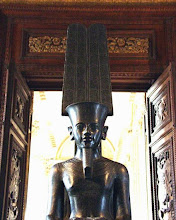'Lucky Camera' Rivals Hubble's Clarity
Resembling a nightmarish beast rearing its head from a crimson sea, this celestial object is actually just a pillar of gas and dust. Called the Cone Nebula (in NGC 2264) - so named because in ground-based images it has a conical shape - this monstrous pillar resides in a turbulent star-forming region. This picture, taken by the Advanced Camera for Surveys (ACS) aboard the NASA/ESA Hubble Space Telescope, on May 11, 2002, shows the upper 2.5 light-years of the Cone, a height that equals 23 million roundtrips to the Moon. The entire pillar is seven light-years long. The Hubble Space Telescope may take photos of the universe's deepest reaches, but some ground telescopes may now get a "Lucky" leg-up on image clarity.
The Hubble Space Telescope may take photos of the universe's deepest reaches, but some ground telescopes may now get a "Lucky" leg-up on image clarity.
Using the new "Lucky Imaging" system, a team of astronomers claims to have taken pictures of stars twice as sharp as those produced by Hubble.
"These are the sharpest images ever taken either from the ground or from space," said Craig Mackay, an astronomer at the University of Cambridge in England who led the research.
Mackay and his colleagues' findings are presented on the Web site for the Institute of Astronomy at the University of Cambridge.
Earth's fluctuating atmosphere not only causes stars to twinkle, but also blurs the photos of astronomers trying to snap clear images of the cosmos.
Sensitive cameras can beat the blurriness, but they can produce grainy "noise" in photographs that makes them nearly unusable. On the other hand, space telescopes such as the Hubble avoid the problem by orbiting above Earth's atmosphere altogether, yet they carry billion-dollar price tags.
To create a ground-based system that could beat noise and fit a budget, Mackay and his team used power in numbers. Their new camera system takes pictures at 20 frames per second, then uses software to merge the best images and eliminate random noise.
"To produce images sharper than Hubble from the ground is a remarkable achievement by anyone's standards," Mackay said of the system, adding that its estimated cost of about $100,000--less than a hundredth of a percent of the Hubble space telescope's growing price tag--is an even greater achievement.
Mackay's team tested the new "Lucky Camera" on a 200-inch (5.1-meter) telescope at the Palomar Observatory in San Diego, Calif., that normally produces images 10 times less detailed than Hubble's. The new camera, however, created images twice as sharp as those of the space telescope.
Mackay said the system's most effective use will be in larger telescopes.
"The images space telescopes produce are of extremely high quality, but they are limited to the size of the telescope," Mackay said. "Our techniques can do very well when the telescope is bigger than Hubble and has intrinsically better resolution."
The one catch for Mackay's new system: Perfectly clear conditions and plenty of time are required to produce crisp images, he says.






